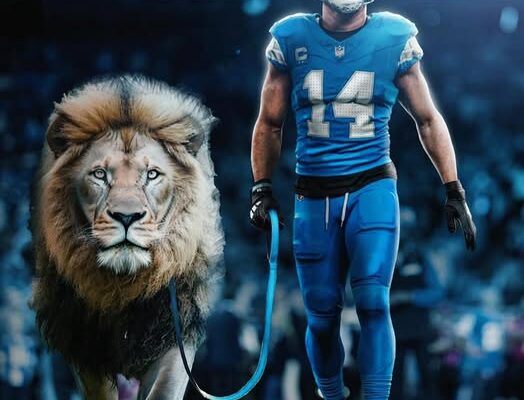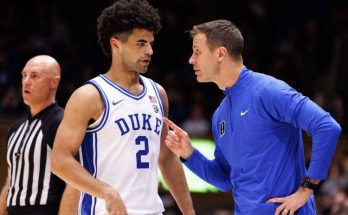The allure of the unconventional, the raw power of nature unfettered, and the sheer spectacle of it all – these are the impulses that likely stirred in Detroit Lions head coach Dan Campbell when he famously expressed his desire to have a real, live lion pacing the sidelines during games. It’s a fantasy rooted in the very essence of the team’s moniker, a bold, almost primal vision that the NFL, with its rigid safety protocols and understandable aversion to liability, predictably and firmly rejected. While the logistical nightmares, ethical considerations, and outright dangers are undeniable, the romantic notion of a majestic beast roaring alongside its human counterparts ignites a fascinating “what if” that captures the imagination.
Dan Campbell’s coaching philosophy is built on grit, toughness, and an unapologetic embrace of a blue-collar, fighting spirit. His teams embody a certain ferocity, a willingness to bite kneecaps, as he famously put it. It’s no wonder, then, that the symbol of the lion, king of the jungle, resonates so deeply with him. For Campbell, a living, breathing lion on the sidelines would be the ultimate embodiment of the team’s identity – a tangible representation of the power, courage, and predatory instinct he demands from his players. It’s a statement, a psychological edge, and a theatrical flourish that would undoubtedly add an unparalleled dimension to the game-day experience.
The immediate and most obvious hurdles, however, are monumental. Safety, first and foremost, is paramount. A full-grown male lion, weighing upwards of 400-500 pounds and capable of running at 50 mph, is a top-tier predator with instincts honed over millennia.1 Placing such an animal in close proximity to thousands of screaming fans, agitated players, frenetic media personnel, and exposed coaching staff is an unthinkable risk. Even the most highly trained animal cannot have its primal instincts completely suppressed. A sudden loud noise, a darting movement, or even a perceived threat could trigger a response with catastrophic consequences. The liability alone would be enough to give any league commissioner nightmares. The possibility of an escape, a bite, or a mauling, however remote, is a risk the NFL would never, and should never, entertain.
Beyond immediate physical danger, there are significant ethical considerations. The welfare of the animal itself would be a major concern. Stadium environments are inherently stressful for wild animals: flashing lights, deafening crowd noise, unfamiliar scents, and limited space.2 Such conditions are a far cry from a lion’s natural habitat and could lead to severe stress, anxiety, or even aggression in the animal. Animal rights organizations would, quite rightly, vehemently oppose such a spectacle, arguing that it constitutes exploitation and cruelty. The optics alone would be disastrous for the NFL, which is increasingly sensitive to public perception and social responsibility.
Then there are the practical challenges. How would the lion be transported? What kind of enclosure would be needed to ensure absolute containment, yet still allow for visibility? What would be the protocol for feeding, waste management, and veterinary care in such an unusual setting? Who would be responsible for its constant supervision? The sheer logistics would be a bureaucratic and operational nightmare, requiring a level of infrastructure and specialized personnel that far exceeds anything currently in place at an NFL stadium.
Despite these overwhelming practicalities and very real dangers, there’s an undeniable, almost childlike fascination with the idea. Imagine the scene: A critical third down, the roar of the crowd reaching a crescendo, and then, a deep, guttural growl from the sidelines, echoing the intensity of the moment. The psychological impact on opposing teams could be immense. It’s one thing to face the “Lions” on the field; it’s another entirely to feel the primal presence of their namesake stalking just yards away. It would be a spectacle unmatched in professional sports, instantly iconic and globally recognized.
The raw, untamed nature of a lion is a stark contrast to the highly controlled, meticulously engineered environment of an NFL game. That contrast, in itself, is part of the appeal. It speaks to a yearning for something less sanitized, something more visceral in a world that often feels overly managed. For a coach like Dan Campbell, who values instinct and aggression, the lion represents the purest form of those traits.
Perhaps the closest we get to this fantasy are the live animal mascots seen in college football, such as the UGA bulldogs, Ralphie the buffalo at Colorado, or the real tiger at LSU. Even these examples, however, operate under extremely strict conditions, are highly trained, and often have designated, secure areas away from the immediate chaos of the sideline. A lion, being a much larger and more dangerous predator, poses a qualitatively different level of risk.
Ultimately, the NFL’s decision to reject Campbell’s audacious proposal was the only responsible course of action. The risks to human safety and animal welfare are simply too great to justify any perceived marketing or psychological benefits. However, the brief, imaginative foray into this wild concept serves as a reminder of Dan Campbell’s unique personality and his relentless pursuit of an identity for his team. It’s a bold thought experiment that, while impractical, fuels the very kind of “what if” conversations that make sports so endlessly fascinating. The roar of the Detroit Lions will continue to come from their players and their passionate fanbase, a formidable force in their own right, even without the king of the jungle physically present on the sidelines.



